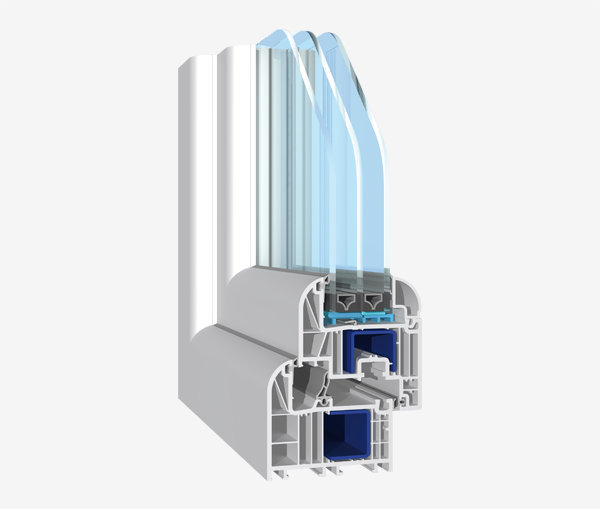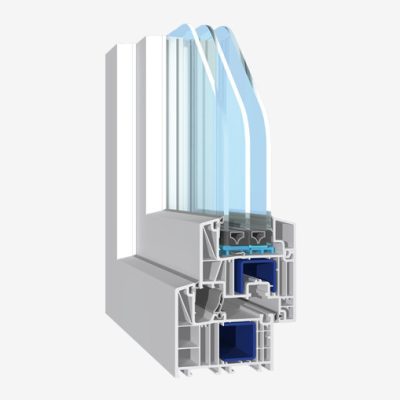
When building a passive house, choosing the right windows is a real challenge. It is worth getting to know the Bluevolution 82 warm windows and their advantages to be able to make a more informed choice. These windows meet the strict standards for passive windows thanks to the use of advanced technologies and high-quality materials. The 6-chamber system in an 82 mm wide PVC profile ensures high thermal protection. In addition, the window is enriched with a double set of gaskets and a two-chamber “warm” glass package. The 48 mm wide glazing, consisting of 3 panes of glass, guarantees a very low heat transfer coefficient. The whole structure is very durable and stable, and the high-quality PVC material ensures a beautiful appearance, long-lasting colour and ease of cleaning. The manufacturer offers a set with a straight or rounded sash. The window frames are available in different colours, so they can be easily matched to the colour of the door or facade. The Bluevolution 82 system is the perfect solution for passive windows, which are expected to provide high protection against heat loss while maximising the intake of thermal energy from the outside.
Passive houses are characterised by very large windows on the sunniest walls of the building. The large windows allow a lot of solar energy to enter the house, which heats the interior. In order for these windows to fulfil their function and not be a source of additional heat loss due to their large surface area, the requirements for the construction and materials used are much stricter than for standard windows. The basis is the heat transfer coefficient for the glass, as it accounts for the vast majority of the entire window. It should not be higher than 0.9 W/(m²K) and the lower it is, the lower the heat loss will be. In addition, the solar energy transmittance coefficient is important, which in the case of windows for passive houses should be at least 55%. This will allow sunlight to easily enter the apartment through the windows and heat it up. The window frame, although usually thin, should be filled with thermal insulation material so that it does not constitute a source of thermal bridges through which heat will “escape” to the outside. It is worth adding that due to their large size, passive windows should have a very durable and stable construction and be made of stress-resistant materials.
The characteristics of low-energy and passive houses are a complex issue, but in simple terms the difference between them is that a low-energy house is designed to reduce the amount of heat that “escapes” from the house, while a passive house should also “draw” thermal energy from the outside. This is an important difference, because the cost of building a passive house is higher, but the subsequent costs of heating the interior are much lower than in other types of construction.
What should passive house windows be like?
What is the difference between an energy-efficient and a passive house?



